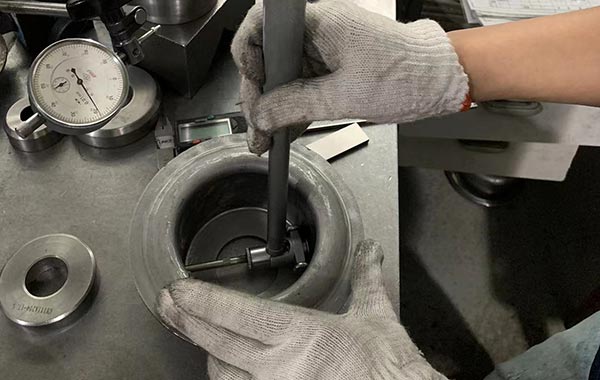In metal stamping production, parts often exhibit defects that affect their quality and functionality. Below are several common defects and corresponding corrective measures.
1. Burrs, Excess metal remains on the stamped edge, which affects assembly or tactile quality.
Causes:
- Excessive or uneven clearance between the punch and die.
- Severe wear of the die cutting edges.
Solutions:
- Adjust the die clearance to a reasonable value (typically 5–10% of material thickness).
- Regularly regrind or replace cutting edges to maintain sharpness.
2. Dimensional Deviation, Significant deviation in hole position, outer profile, or bending angle, affecting assembly precision.
Causes:
- Improper die clearance.
- Inadequate springback control.
- Variations in material properties.
Solutions:
- Precisely fine-tune die dimensions.
- Add hold-down devices or apply springback compensation in the forming process.(based on the calculated springback coefficient ratio for different materials)
- Ensure material consistency by using the same supplier and consistent thickness.
3. Cracking, Cracks appear in the deep-drawn or formed area.
Causes:
- Insufficient material elongation.
- Inadequate fillet radius design.
- Inadequate blank-holder force.
Solutions:
- Use materials with better plasticity.
- Increase die corner radius (generally 4–10 times material thickness).
- Optimize blank-holder pressure and lubrication conditions.
4. Wrinkling, Wrinkles or folds appear in the sheet during deep drawing or bending.
Causes:
- Insufficient or uneven blank-holder force.
- Sheet material too thin.(number of drawing)
- Excessive lubrication.
Solutions:
- Increase blank-holder force or add draw beads.
- Use appropriately thick material.(Adjust the deep drawing coefficient (times) according to the material thickness)
- Control lubrication to ensure uniform application.
5. Punching Deformation or Edge Collapse, Holes are out-of-round, edges are deformed or collapsed.
Causes:
- Improper stamping sequence.
- Inadequate die design, lacking proper guidance or support.
Solutions:
- Optimize the stamping sequence, preform or pre-press before punching.
- Add positioning and support features to ensure process stability.

Effective control of stamping defects relies on systematic analysis of root causes, combined with improvements in die design, material selection, and process optimization. Establishing a stable quality control system through data feedback and on-site validation is fundamental to achieving high-quality stamping production.


